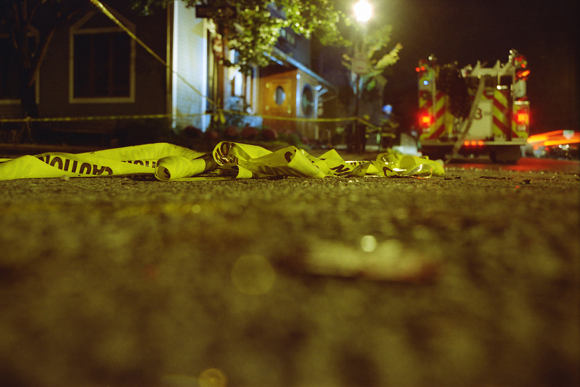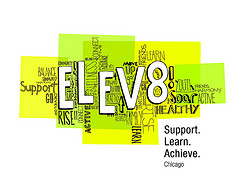Curing Violence Starts at the Community Level
Resource type: News
Mediaplanet | [ View Original Source (opens in new window) ]

Photo: Flickr via MediaPlanet
By Emily Morrow
David* was a model eighth-grader. He had exemplary grades, a near perfect attendance record and scored well on all his state exams.
Then, he made his first suicide threat.
He was hospitalized for a day or so, but when doctors didn’t see any further signs that he might harm himself, he was released. Then, David made a second threat. This time, he said, he would hurt his mom, too.
David is one of hundreds of children in East Baltimore who have been exposed to and traumatized by violence, experiences that experts say put children at greater risk of becoming violent themselves.
A contagious disease
“Violence is a disease,” says Dr. Gary Slutkin, an infectious diseases expert and the founder of Cure Violence. “It behaves like it’s contagious. So, the greatest predictor of a case of violence is a preceding case of violence.”
Slutkin’s experience working to reverse the spread of tuberculosis, cholera and AIDS throughout Africa has become surprisingly comparable to his work in stopping the onslaught of violent crimes in America’s cities. The techniques are the same, Slutkin says. To be successful, you can’t just treat those who are suffering from the disease; you must fundamentally change the thinking of the entire community. Started in Chicago, Slutkin’s methodology has spread to cities like Kansas City, New Orleans, New York and Baltimore.
Baltimore, David’s hometown, is one of the most dangerous cities in the U.S. In 2012, there were more than 8,700 violent crimes reported throughout the city, according to the FBI’s annual crime statistics. East Baltimore, a largely low-income, African American neighborhood, is a particular hotbed for criminal and gang activity.
Curing a community
There is a culture of violence that needs to change, says Nicole Johnson. Johnson is the senior director for Elev8 Baltimore, a program that is working to effect positive change in East Baltimore by focusing on the children.
This program’s primary, short-term goal is to help prepare middle school students to transition into high school by changing students’ attitudes toward school.
In addition to after-school and summer programs for students and development workshops for parents, a key component to the program is its commitment to helping students deal with stresses in a healthy, positive way without resorting to violence. These lessons, Johnson says, will be crucial to the future success of Elev8’s students.
The 11- to 14-year-olds in the program are at an especially stressful time in their lives, Johnson said. At this point, the majority of students in her schools have experienced numerous traumatic situations either first-hand or through friends or neighbors. Many are caring for their siblings. On top of that, they’re going through the physical changes of puberty.
“It’s a lot of additional pressure all at once,” Johnson said. “A lot of students can’t manage it all by themselves. And frankly, even if they can, they shouldn’t have to. They’re still children.”
In an annual survey given to determine students’ stress levels, East Baltimore students report that they’re experiencing an average of eight out of 12 stressors, Johnson said.
David is a prime example of what can happen to a 13-year-old faced with incredible amounts of stress.
After learning about David’s threats of violence, counselors learned that he was being bullied because of his good grades. They also learned that David had experienced some emotional trauma when he was younger that he was still struggling to cope with on his own. In addition, he was getting ready to leave the small school he’d attended since he was five years old to attend a magnet high school more than double the size.
When David learned that the hospital would let him stay for a day or even two if he threatened to harm himself, that’s what he resorted to. “He was just trying to find a safe space,” Johnson said.
When David returned to school, counselors and teachers intervened to address and stop the bullying. He began seeing a therapist to address his deeper emotional trauma.
But Johnson and her team knew these students needed something more.
“They’re living in a constant environment of violence and trauma,” she said. “We knew we needed a comprehensive response to this.”
A widespread approach
Elev8 began by offering individual and small group counseling sessions to students in need, set up by teacher or counselor recommendations. But the recommendations never stopped flowing in and the team was inundated. “We knew we couldn’t keep providing services for individual students when the entire seventh grade needed help,” Johnson said.
So Elev8, in a partnership with Johns Hopkins, created D-Stress Baltimore — a program that is integrated into students’ general health education classes and that focuses on ways to manage and respond to stress and trauma.
Additionally, Johnson and her team increased the presence of wellness coordinators in participating schools. These coordinators facilitate communication between students’ therapists and teachers and act as an extra eye looking out for students who might be in need of therapy — students like David.
Alleviating anxiety
In the D-Stress classes, students learn techniques to deal with anxiety, like journaling or taking three deep breaths. They learn to make worry boxes — a safe place to store their written-out worries until they are ready to address the problem.
“Instructors from Johns Hopkins teach them to be aware of their emotional state, to articulate their feelings and then to take steps to calm down or redirect their emotions,” Johnson said.
The beauty of these lessons is they’re not just for students who are dealing with severe trauma; they’re also lessons for how to deal with friends or teachers, difficult exams or stressful jobs.
“There is a climate and cultural shift that needs to happen in this community,” Johnson said. With Elev8, she feels they’re on the right track.
Last year, 200 students learned that there are ways to solve problems without resorting to violence. This year, another 200 will get that lesson.
Hopefully, one day, all of Baltimore will trade its guns for worry boxes.
*Name has been changed to protect child’s identity
To Learn More about Elev8:
> Visit our Elev8 page for videos and updates
> Visit www.elev8kids.org or the websites of the local initiatives:
Elev8 Baltimore
Elev8 Chicago
Elev8 New Mexico
Elev8 Oakland
Elev8 is a grantee of Atlantic’s Children & Youth programme in the United States, which funds efforts to support and expand community schools.
